Idlis are soft, fluffy, and subtly tangy steamed rice cakes that are a staple breakfast in South India. Their light texture and mild flavor make them perfect to pair with coconut chutney, sambar, or a spicy tomato chutney. While it might seem like a challenge to make restaurant-quality idlis at home, with the right technique and patience, you can achieve the soft, airy texture that makes idlis so irresistible.
This guide provides a 6-step process to prepare fluffy idlis like a South Indian chef, including tips on fermentation, steaming, and serving.
Step 1: Gather Fresh Ingredients
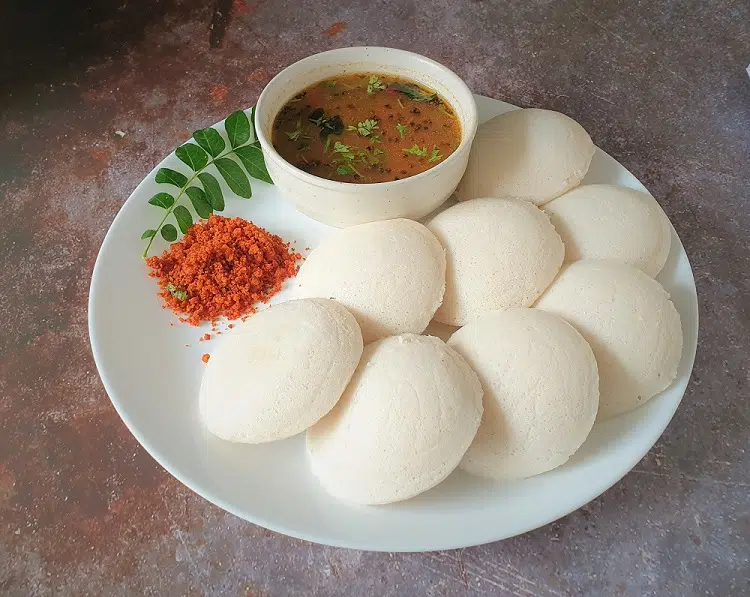
The key to perfect idlis begins with high-quality ingredients.
Ingredients for Idli Batter:
- Parboiled Rice (Idli Rice): 2 cups
- Urad Dal (Split Black Gram): ½ cup
- Fenugreek Seeds: 1 teaspoon
- Water: For soaking and grinding
- Salt: To taste
Optional Ingredients for Enhanced Flavor:
- Cooked Quinoa or Millet: ½ cup (for variation)
- Grated Coconut: 2 tablespoons (for aroma)
- Oil or Ghee: 1 teaspoon for greasing idli molds
Tip: Using parboiled rice ensures idlis remain soft and fluffy. Fenugreek seeds aid in fermentation and improve texture.
Step 2: Soak Rice and Dal
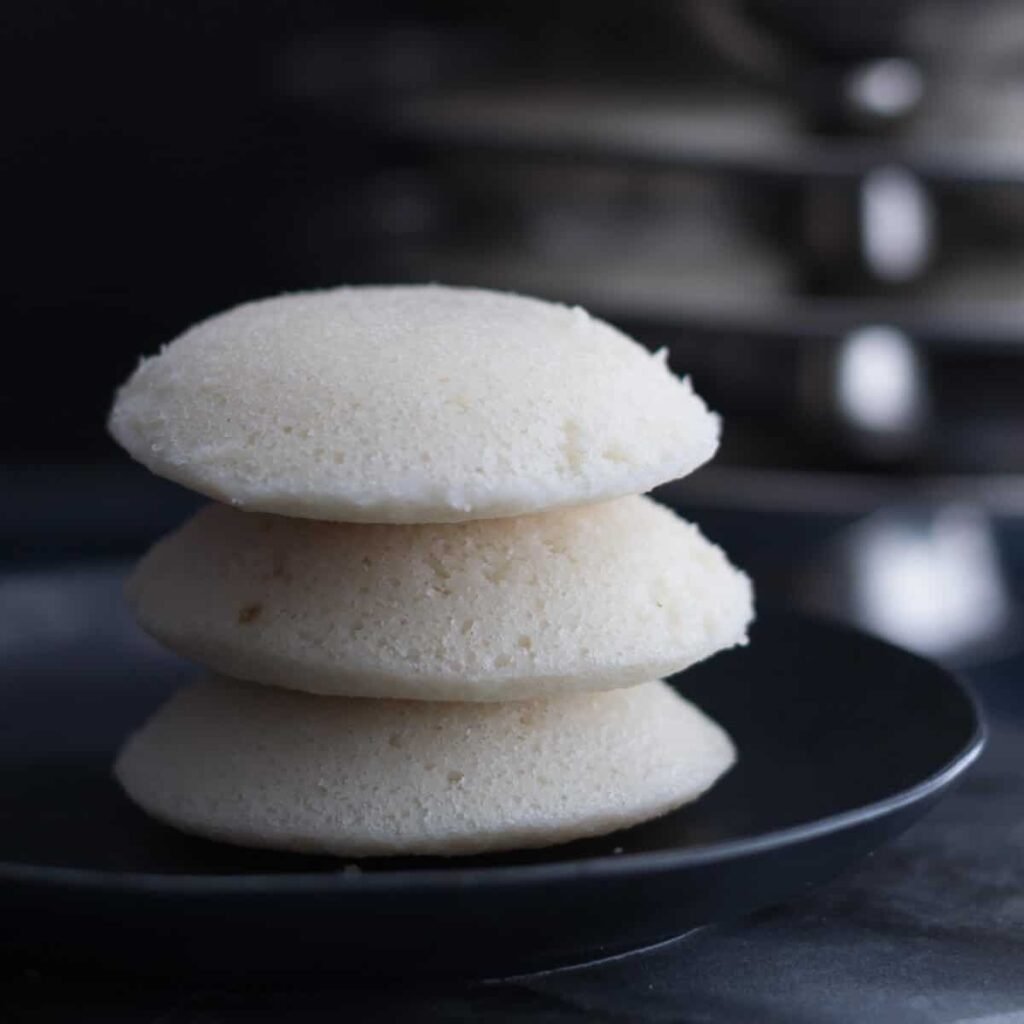
Proper soaking softens the ingredients and ensures smooth grinding.
Instructions:
- Wash 2 cups rice thoroughly in running water until water runs clear.
- Wash ½ cup urad dal separately.
- Soak rice and urad dal separately in enough water for 4–6 hours.
- Add 1 teaspoon fenugreek seeds to the urad dal while soaking.
Tip: Soaking time can be adjusted depending on the climate; warmer areas require shorter soaking.
Step 3: Grind the Batter
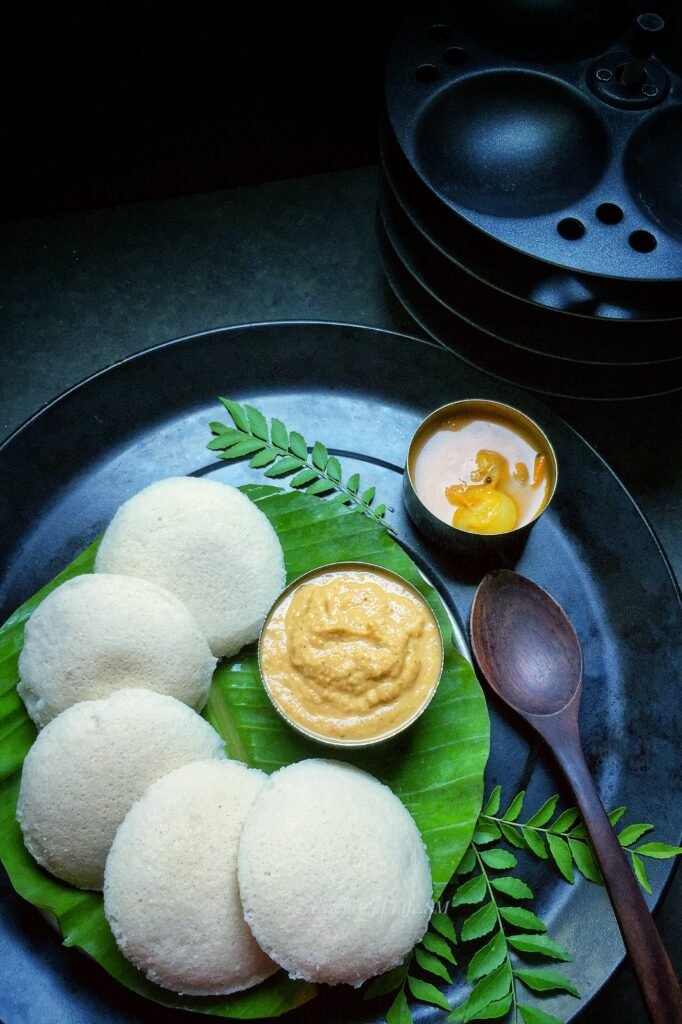
Grinding the batter correctly is crucial for achieving soft, airy idlis.
Instructions:
- Drain soaked urad dal and grind it with minimal water to a smooth, fluffy paste.
- Drain the soaked rice and grind it to a slightly coarse paste; the texture should be grainy but fine enough to bind.
- Mix both pastes together in a large bowl.
- Add salt and mix well using your hand or spatula, which helps in activating the fermentation process.
Tip: A slightly thick batter yields better idlis, but it should still be pourable. Avoid adding too much water, as it may result in soggy idlis.
Step 4: Ferment the Batter
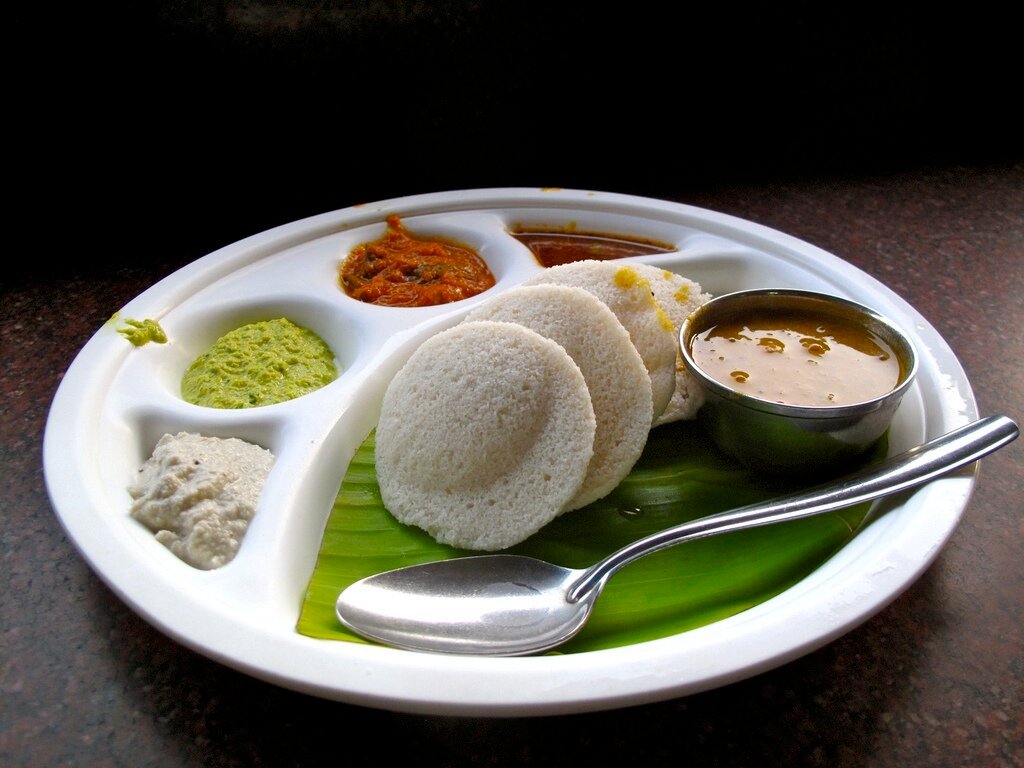
Fermentation is what gives idlis their signature tang and fluffiness.
Instructions:
- Cover the batter with a clean cloth or lid.
- Place in a warm, draft-free area for 8–12 hours or overnight.
- Check for air bubbles and a slight increase in volume. A mildly tangy aroma indicates proper fermentation.
Tip: In colder climates, place the batter in an oven with the light on or near a warm spot in your kitchen to encourage fermentation.
Step 5: Prepare and Steam the Idlis
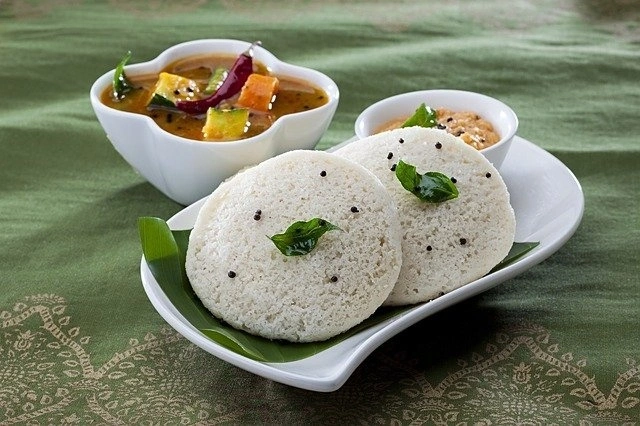
Steaming the batter properly is the final step to achieve soft, fluffy idlis.
Instructions:
- Grease Idli Molds: Lightly brush oil or ghee in the idli molds to prevent sticking.
- Pour Batter: Fill each mold ¾ full with fermented batter.
- Steam:
- Use a traditional idli steamer or a large pot with a lid and a steaming rack.
- Boil water in the base, ensuring the water level is below the molds.
- Place molds in the steamer and cover with a lid.
- Steam for 10–12 minutes on medium heat.
- Check Doneness:
- Insert a toothpick or knife in the center; it should come out clean.
- Remove Idlis: Allow to cool for 2–3 minutes before gently removing from molds using a spoon.
Tip: Avoid opening the lid during steaming, as sudden temperature changes may affect fluffiness.
Step 6: Serve and Enjoy
Idlis are best enjoyed fresh and hot, paired with traditional South Indian accompaniments.
Serving Suggestions:
- Coconut Chutney: Blend grated coconut, green chilies, roasted chana dal, and salt. Add tempering of mustard seeds and curry leaves for added flavor.
- Sambar: A lentil-based vegetable stew cooked with tamarind and spices.
- Tomato or Onion Chutney: Quick and tangy options for variation.
- Optional Garnish: Add ghee or a drizzle of sesame oil over the idlis for extra aroma and richness.
Tip: Serve idlis immediately after steaming for maximum softness and flavor.
Extra Tips for Perfect Fluffy Idlis
- Consistency: The batter should be thick but pourable; too thin batter results in dense idlis.
- Proper Fermentation: A warm environment and slight hand mixing after soaking enhance airiness.
- Steam Correctly: Steam for 10–12 minutes only; over-steaming can make idlis tough.
- Rest Before Steaming: Let the batter rest after stirring, allowing air bubbles to develop.
- Use Cast Iron or Non-Stick Idli Molds: Ensures even steaming and prevents sticking.
Common Mistakes to Avoid
- Skipping Fenugreek Seeds: Reduces fermentation quality and fluffiness.
- Cold Batter: Batter straight from the fridge may not rise properly.
- Adding Too Much Water: Leads to soggy idlis that do not hold shape.
- Overcrowding the Steamer: Prevents proper steam circulation, resulting in unevenly cooked idlis.
- Removing Too Early: Idlis may collapse if removed immediately after steaming.
Tip: Patience and attention to detail are key to making soft, airy idlis.
Healthier Variations
- Use brown rice or millets for a high-fiber version.
- Add oats or quinoa along with rice for added nutrition.
- Incorporate grated carrots or beetroot in the batter for a colorful twist.
- Steam idlis using less oil; a light brushing is sufficient.
Tip: Even with healthier substitutions, maintaining correct fermentation and steaming ensures soft and fluffy idlis.
Serving Ideas and Pairings
- Serve with medu vada for a traditional South Indian breakfast combo.
- Pair with spiced buttermilk or filter coffee for a complete meal.
- Use leftover idlis to make idli upma or idli stir-fry for creative, quick meals.
- Add tempered mustard seeds, curry leaves, and chili flakes on top for an extra flavor punch.
Tip: Fluffy idlis are versatile and can be enjoyed in many ways beyond breakfast.
Final Thoughts
Making fluffy idlis like a South Indian chef is entirely achievable at home with proper soaking, grinding, fermentation, and steaming techniques. Following the 6-step process—gathering ingredients, soaking, grinding, fermenting, steaming, and serving—ensures you get soft, airy, and flavorful idlis every time.
Homemade idlis allow you to control the ingredients, experiment with grains, and customize flavor to suit your family’s taste. Paired with coconut chutney, sambar, or other accompaniments, idlis make for a wholesome, nutritious, and comforting meal. With patience and practice, you can master the art of making perfect South Indian-style idlis at home, bringing the authentic taste of South India straight to your breakfast table.





